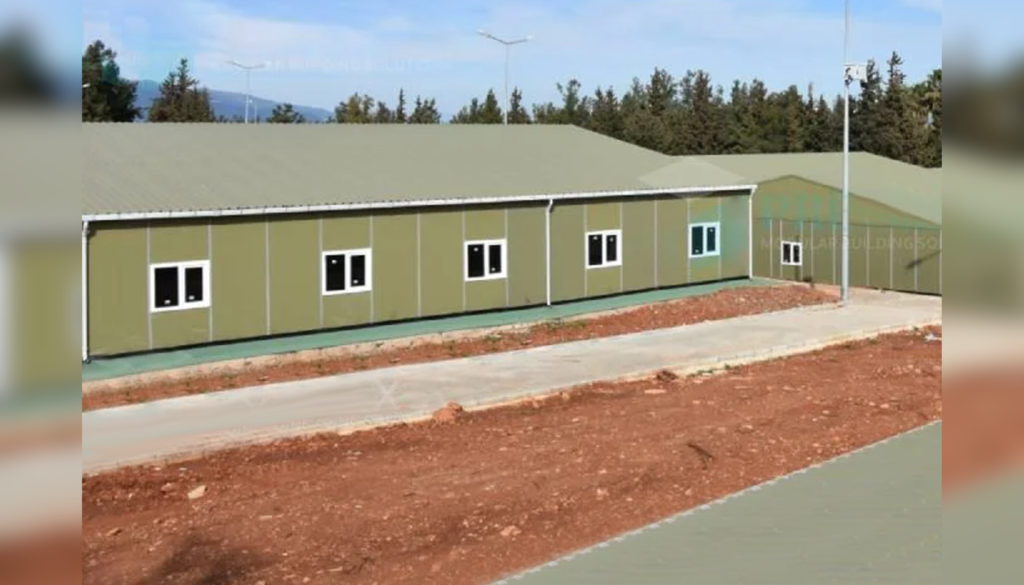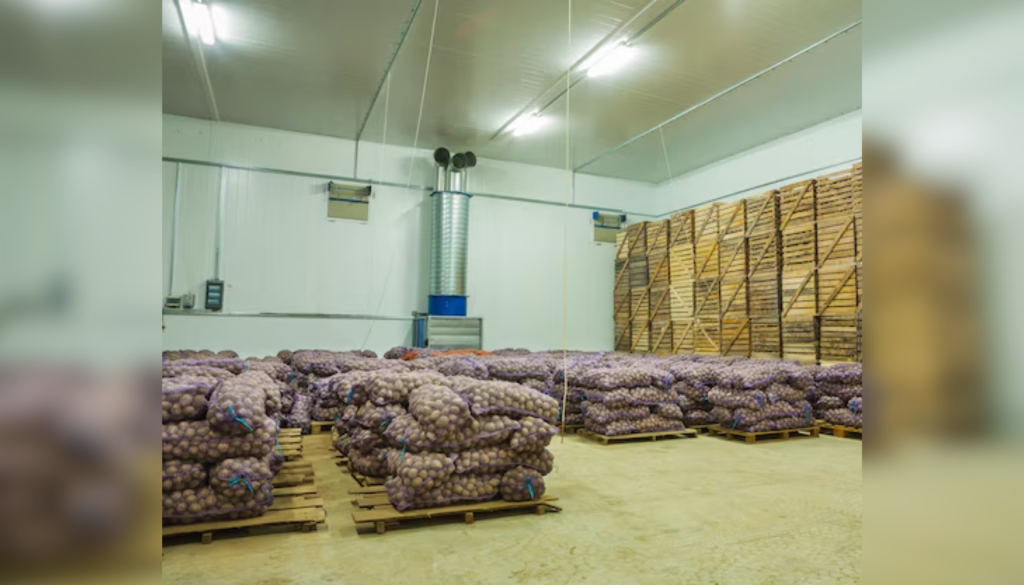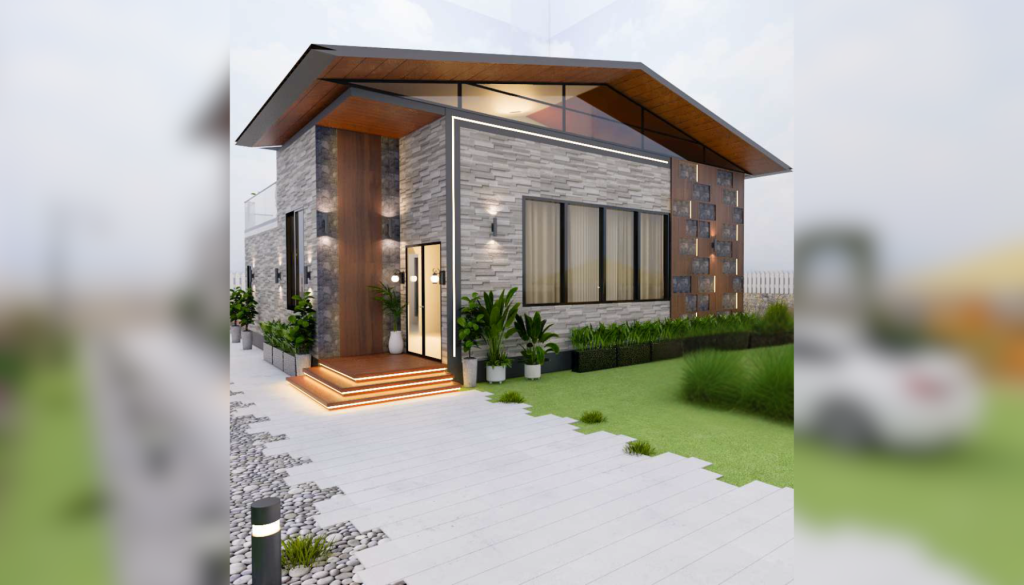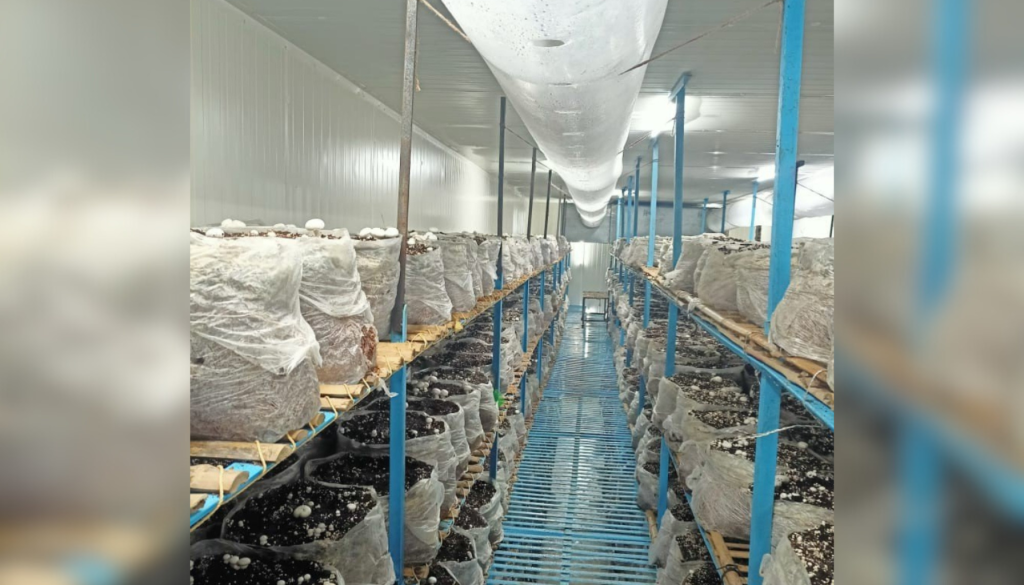Construction of PUF Panel Army Barracks
PUF Panel Army Barracks Construction of PUF Panel Army Barracks In the rapidly evolving landscape of military construction, the use of innovative materials such as Polyurethane Foam (PUF) panels has become increasingly significant. These PUF panels, characterized by their outstanding thermal insulation, durability, and light weight, are revolutionizing the construction of army barracks and military shelters. PUF panels are crafted from polyurethane, a type of polymer known for its excellent thermal insulation properties. This makes them not only energy-efficient but also highly effective in maintaining comfortable living conditions within army shelters, irrespective of external weather conditions. The inherent lightness of PUF panels simplifies transportation and assembly, making them ideal for military shelters that require rapid deployment and relocation. The importance of modern materials like PUF panels in military infrastructure cannot be overstated. Traditional construction materials often fall short in meeting the dynamic needs of military operations, where speed, flexibility, and efficiency are paramount. PUF panels address these challenges head-on, offering quick assembly times and robustness, which are critical for army barracks that need to withstand diverse environmental stresses. In constructing army barracks, the role of PUF panels extends beyond mere functionality. They contribute to a modular and adaptable solution that can be easily customized to fulfil specific military requirements. This adaptability is essential in military shelters, where configurations may need to change based on strategic demands. Thus, PUF panels not only enhance the operational capabilities of army barracks but also ensure a higher standard of living and safety for military personnel, underscoring their growing indispensability in modern military operations. What are Army Barracks? An army barrack serves as the basic living and working quarters for military personnel. Historically designed to provide a secure place to sleep, modern army barracks have evolved to meet the complex demands of military efficiency and the well-being of soldiers. At its core, an army barrack functions as a vital component in military operations, facilitating the management, training, and readiness of troops. The history of army barracks traces back to the Roman legions, where structured camp layouts were designed for security and efficiency. Over the centuries, military shelters have transformed from simple tents and makeshift accommodations to permanent structures that prioritize functionality and comfort. This evolution reflects broader military strategies and technological advancements, adapting to the changing dynamics of warfare and peacetime needs. Today’s army barracks are characterized by a range of features designed to support the rigorous demands of military life. These facilities typically include sleeping quarters, communal restrooms, and mess halls. More modern army barracks go beyond these basics, incorporating amenities such as recreation rooms, fitness centers, and comprehensive administrative services, all designed to ensure the well-being and morale of the troops. Such features are integral not only to the daily life within the barrack but also to fostering a sense of community and camaraderie among soldiers. The role of army barracks in military logistics and personnel management is multifaceted. They serve as the operational base from which training, deployment, and administrative tasks are coordinated. The efficiency of army shelters directly impacts the readiness and operational capabilities of the military, making them a crucial asset in defense strategy. Additionally, army barracks play a significant role in personnel management by providing a structured environment that supports discipline, hierarchical order, and the personal development of soldiers. This structured setting is essential for maintaining the effectiveness and cohesion of military forces, underscoring the pivotal role of army barracks in the broader context of national security and defense operations. What are PUF Panels? Polyurethane Foam (PUF) panels are advanced construction materials widely recognized for their versatility and efficiency in building structures like army barracks and military shelters. These panels are made from polyurethane foam, an insulation material known for its exceptional thermal properties and structural integrity. Composition and Manufacturing Process The composition of PUF panels involves a core of polyurethane foam sandwiched between layers of structural facings, typically made of steel or aluminium sheets. The manufacturing process begins with the chemical reaction of two main components—polyol and isocyanate. This reaction forms a foam that expands and solidifies into a rigid insulating layer. The foam core is then bonded to the facings in a controlled factory environment, ensuring uniform quality and durability. This process allows for the mass production of PUF panels that meet precise specifications with consistent quality. Key Properties PUF panels are celebrated for several key properties: Thermal Insulation: The closed-cell structure of polyurethane foam provides excellent thermal resistance, which significantly enhances the energy efficiency of military shelters by maintaining steady internal temperatures in both hot and cold climates. Lightweight: Despite their strength, PUF panels are relatively light, which simplifies handling and installation processes, and reduces the overall load on structural supports. This lightweight nature makes them particularly useful in mobile or temporary military shelter setups. Structural Strength: Polyurethane foam offers a high strength-to-weight ratio, which contributes to the structural integrity of the constructed facility, ensuring that army barracks are not only insulated but also robust and secure. Comparison with Traditional Building Materials When compared to traditional building materials like wood, concrete, or brick, PUF panels offer several distinct advantages for military constructions: Faster Construction: The prefabricated nature of PUF panels allows for rapid assembly of army shelters, which is crucial in scenarios requiring quick deployment. Better Insulation: With superior insulative properties, PUF panels outperform many conventional materials, leading to lower energy costs and improved comfort for occupants. Durability and Maintenance: Polyurethane is resistant to mold, mildew, and corrosion, which are common issues in army barracks made from traditional materials. This resistance translates to lower maintenance costs and longer service life. The integration of PUF panels into army barrack construction not only enhances the operational effectiveness of military installations but also promotes sustainability and resilience. As military needs continue to evolve, PUF panels stand out as a superior choice for modernizing army shelters and enhancing the overall living and working conditions for military personnel. Advantages of Using PUF Panels in Army Barracks Polyurethane Foam (PUF) panels
Construction of PUF Panel Army Barracks Read More »






